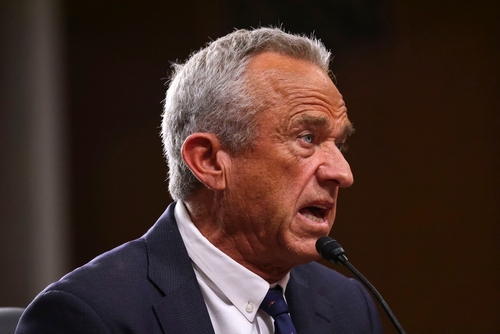FDA announces plan to phase out synthetic food dyes
- Like
- Digg
- Del
- Tumblr
- VKontakte
- Buffer
- Love This
- Odnoklassniki
- Meneame
- Blogger
- Amazon
- Yahoo Mail
- Gmail
- AOL
- Newsvine
- HackerNews
- Evernote
- MySpace
- Mail.ru
- Viadeo
- Line
- Comments
- Yummly
- SMS
- Viber
- Telegram
- Subscribe
- Skype
- Facebook Messenger
- Kakao
- LiveJournal
- Yammer
- Edgar
- Fintel
- Mix
- Instapaper
- Copy Link
Posted: 23 April 2025 | Ian Westcott | No comments yet
The FDA has announced it will phase out synthetic food dyes—including Red 40 and Yellow 5—by 2026, marking a major shift toward natural additives.


HHS Secretary Robert F. Kennedy Jr. described the FDA’s decision to phase out synthetic food dyes as a return to “gold-standard science” and a step toward safeguarding children’s health. Credit: Shutterstock
The U.S. Department of Health and Human Services (HHS) and the U.S. Food and Drug Administration (FDA) have announced a new initiative to eliminate petroleum-based synthetic dyes from the U.S. food supply. The plan forms part of the broader Make America Healthy Again campaign and marks a significant policy change aimed at supporting long-term public health.
Timeline and scope of the phase-out
- The FDA will take the following steps:
- Establish a national standard and timeline for manufacturers to transition to natural alternatives
- Revoke authorisation for Citrus Red No. 2 and Orange B in the coming months
- Phase out six synthetic dyes—FD&C Green No. 3, Red No. 40, Yellow No. 5, Yellow No. 6, Blue No. 1 and Blue No. 2—by the end of 2026
- Fast-track approval of four new natural colour additives, with further options under review
- Request earlier removal of FD&C Red No. 3, previously slated for phase-out by 2027–2028
Research and industry collaboration
The FDA is working with the National Institutes of Health (NIH) to expand research into the potential health effects of food additives, particularly in children. The agency also plans to issue guidance to support food manufacturers during the transition and to accelerate regulatory review of alternative colourings such as calcium phosphate, butterfly pea flower extract, Galdieria blue and gardenia blue.
Public statements and rationale
In a statement, HHS Secretary Robert F. Kennedy, Jr. said:
“These compounds offer no nutritional benefit and pose measurable risks to children’s health. That era is coming to an end.”
FDA Commissioner Dr Marty Makary added:
“Given concerns about the impact of certain synthetic dyes on health, we are asking companies to make changes similar to those already adopted in Canada and the EU.”
A move towards alignment with global standards
The FDA says these changes are designed to better align U.S. food regulations with international practices and to reflect growing demand for transparency and natural ingredients. The agency emphasised its commitment to evidence-based decision-making and collaboration with industry throughout the transition process.
Read expert analysis from distinguished Food Safety Expert Dr Darin Detwiler, and David Acheson, President and CEO of the Acheson Group, on the broader implications of RFK’s approach to food safety reform in New Food’s previous coverage.









